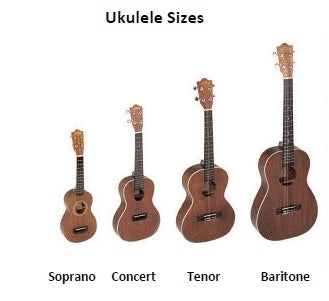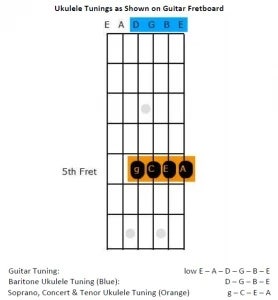When it comes to selecting a ukulele, there are multiple factors to think about before making your decision. West Music is here to help shed some light on the features and advantages of the different ukulele sizes that we have to offer to help you choose the right ukulele for you.
What Kinds of Ukulele Sizes Exist?


How to Choose a Soprano Ukulele
Each ukulele size also has a distinct tone. Soprano ukuleles have a shallower tone – this is the tone that typically comes to mind when thinking about how a ukulele sounds. They are the most popular size, partially due to its inexpensive price point and portability. It is the most accessible size, as most of the open chords are played in first position, within the first five frets. Most soprano ukuleles have twelve frets with just under a two-octave range.
How to Choose a Tenor Ukulele
Tenor ukuleles have a much deeper and fuller sound, due to the larger body size and longer strings, while concert ukuleles fall in the middle on tonal character. These larger sizes typically have fifteen to twenty frets, along with more space on the fretboard for more advanced chords. The tenor ukulele happens to be the preferred ukulele size among stage performers, as it has the most space between frets, highest number of playable notes, and fullest dynamic range.
How to Choose a Concert Ukulele
If you are looking for something in between, the concert ukulele is a great mix of traits from both the tenor and soprano sizes. It may be the most comfortable fretboard size for larger hands. All three of these ukuleles have the same tuning (g’-c’-e’-a’).
How to Choose a Baritone Ukulele
Baritone ukuleles, however, are tuned identically to the top four strings of the standard six-string guitar (d’-g’-b’-e’), making it a great option for beginner guitar players. There are fewer strings with the ability to use the same chord shapes, minus the bottom two strings.


How to Tune a Ukulele
The smaller ukuleles (the soprano, concert, and tenor sizes) are tuned a fourth higher (five half steps) than the baritone ukulele. The most common tuning used for these ukuleles is called
“re-entrant tuning,” in which the third string happens to be tuned to the lowest pitch and the fourth string being a fifth higher in pitch.
In typical linear tuning, the bottom string is the lowest pitched string, each consecutive string being higher in pitch, like the guitar and the baritone ukulele. The re-entrant tuning of the ukulele (g’-c’-e’-a’) gives it the signature sound.
Most ukuleles are pre-strung with the re-entrant tuning in mind, so to switch to linear tuning, you will need to purchase and install a low G string. Being that the nut of the ukulele will be shaped for re-entrant tuning, a luthier may need to reshape the groove for the nut to accommodate a low G string.
Choosing the Ukulele
Selecting the right ukulele for you is primarily based on personal preference. Soprano ukuleles are typically the most popular choice because of their cost and size, and many beginners start with the soprano to learn the fretboard and basic chord positions. However, you will want to take the following factors into consideration when selecting a ukulele.
Look: There are so many options out there when it comes to style. You will want the ukulele to match the personality of the player. The key is to pick an instrument that will inspire you to learn and grow as a musician.
Tone: Ukuleles differ in their sound quality and tone. Playing different ukuleles, listening to various models online, and reading reviews before selecting a ukulele are great ways to see what you like. The Aquila Nylgut strings are the most common ukulele strings in the industry for most beginner and intermediate ukuleles.
Budget: The larger ukulele sizes will cost more than soprano ukuleles. More expensive ukuleles will be made of solid wood rather than laminate wood. You will notice that solid wood ukuleles may not necessarily sound better than laminate wood ukuleles. Often you will hear a great tone with a laminate body, while still having the beautiful features of a solid wood body.
Laminate-bodied ukuleles have a thinner top than solid wood, which causes more vibration and increased sound. Plus, the veneer finish still gives the appeal of a wood grain look with potentially better durability. They are less sensitive to changes in humidity and temperature.
Solid wood ukuleles are far more expensive than laminate body ukuleles because it takes more material and better craftsmanship. The sound quality improves as the wood ages. Keep in mind that they do require more care and humidification to avoid cracking and warping of the instrument.
Choosing the right ukulele for you is a personal choice. Beginners may want to select the soprano ukulele, while others may want a larger model because of their features. There truly is no right or wrong choice for a starter ukulele. Keep these factors in mind when making your choice, and you will find the ukulele that is perfect for you.






